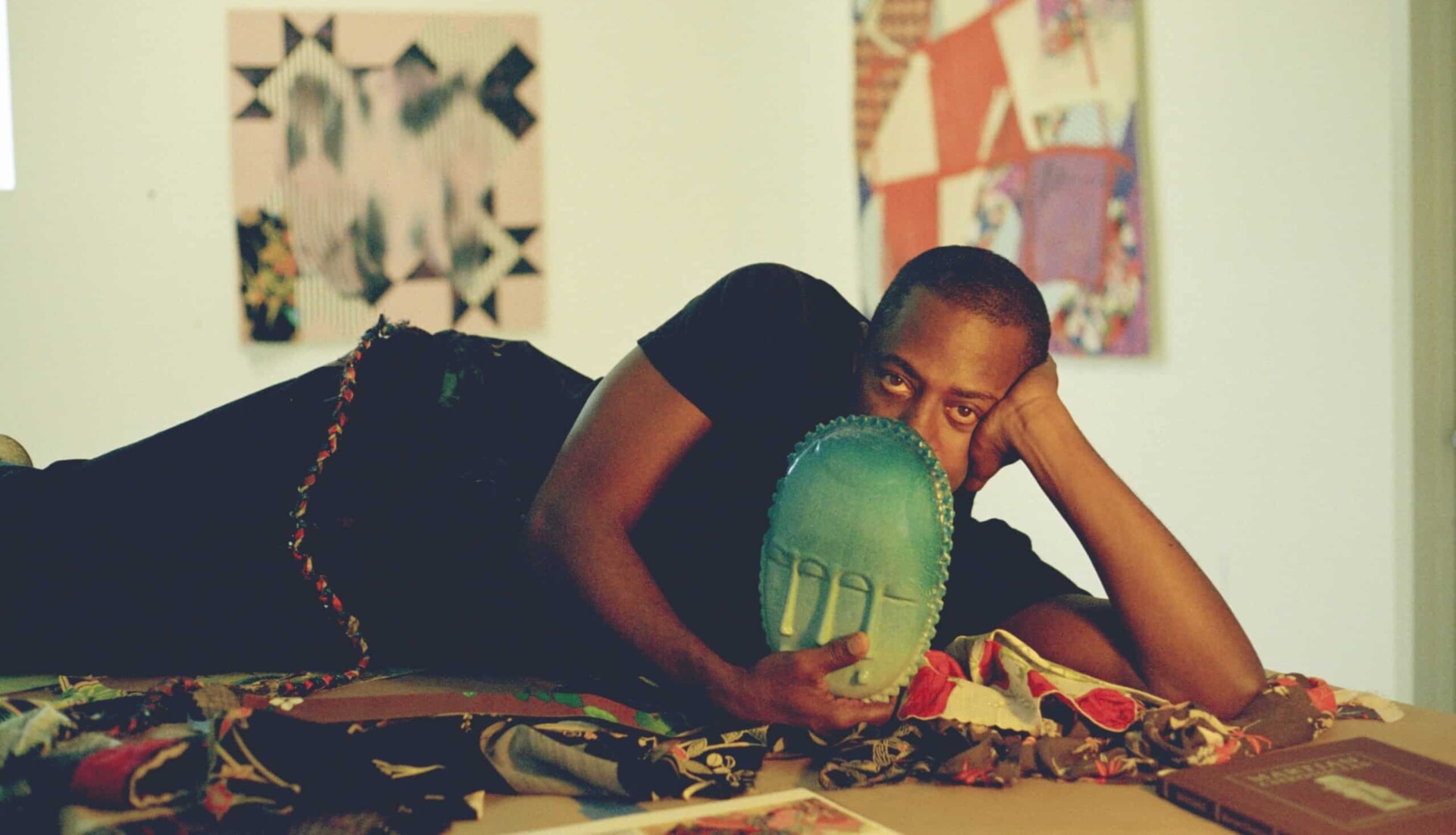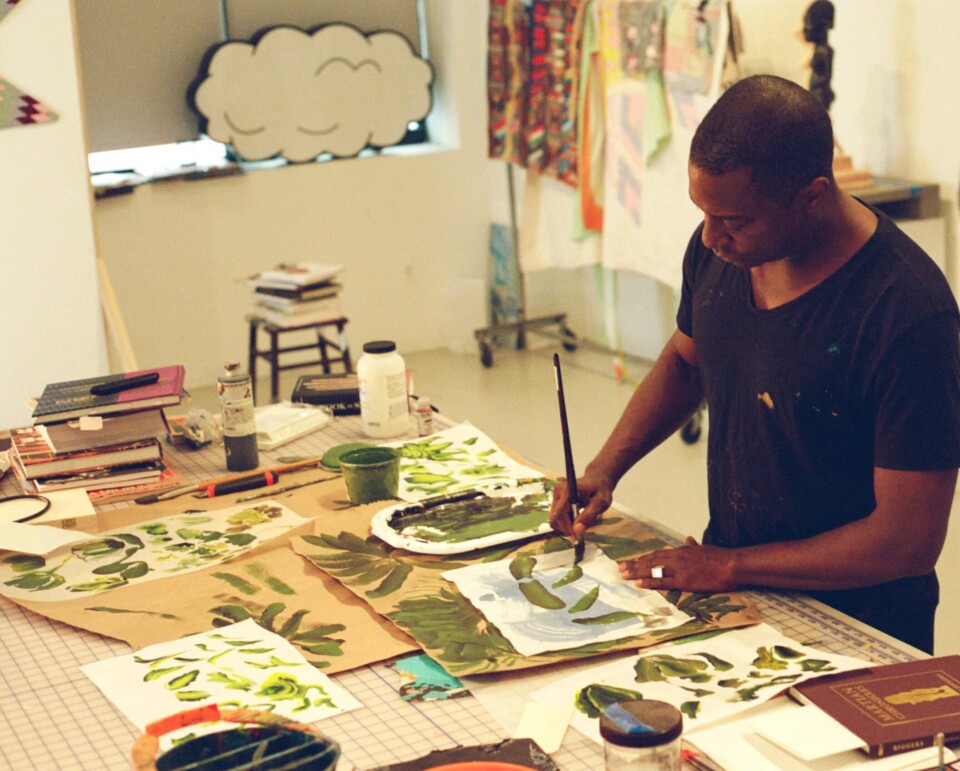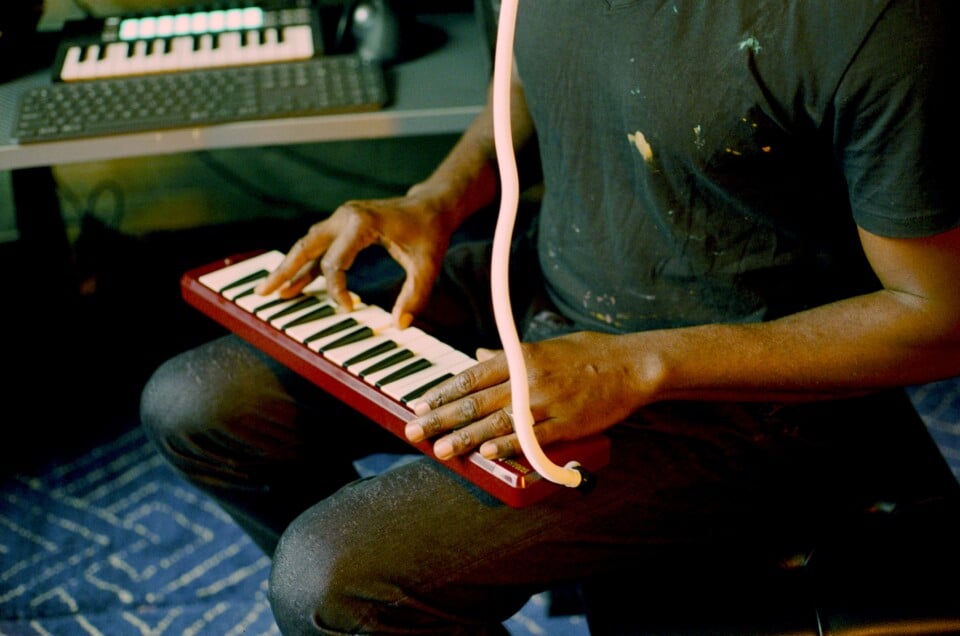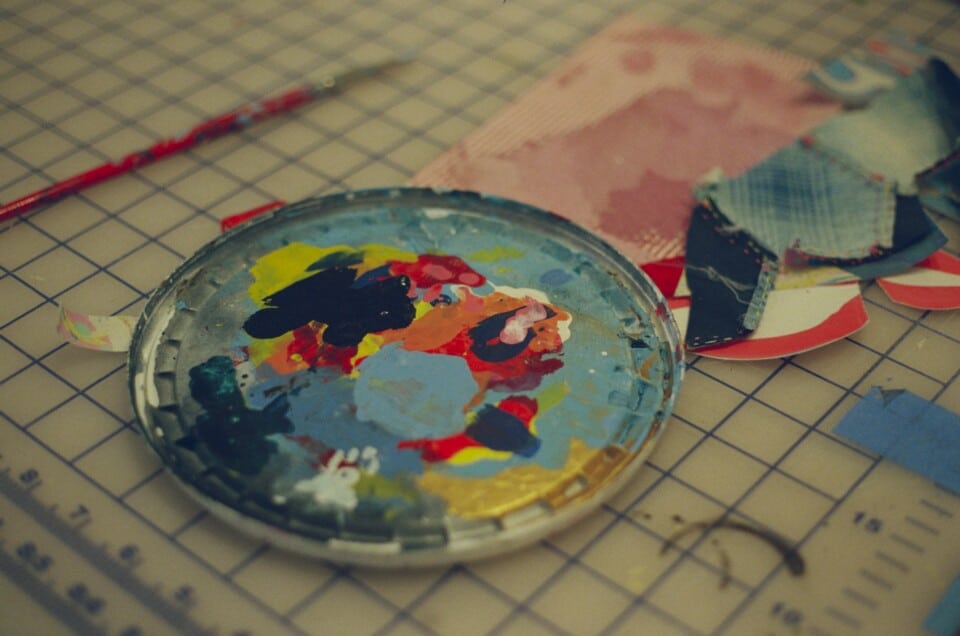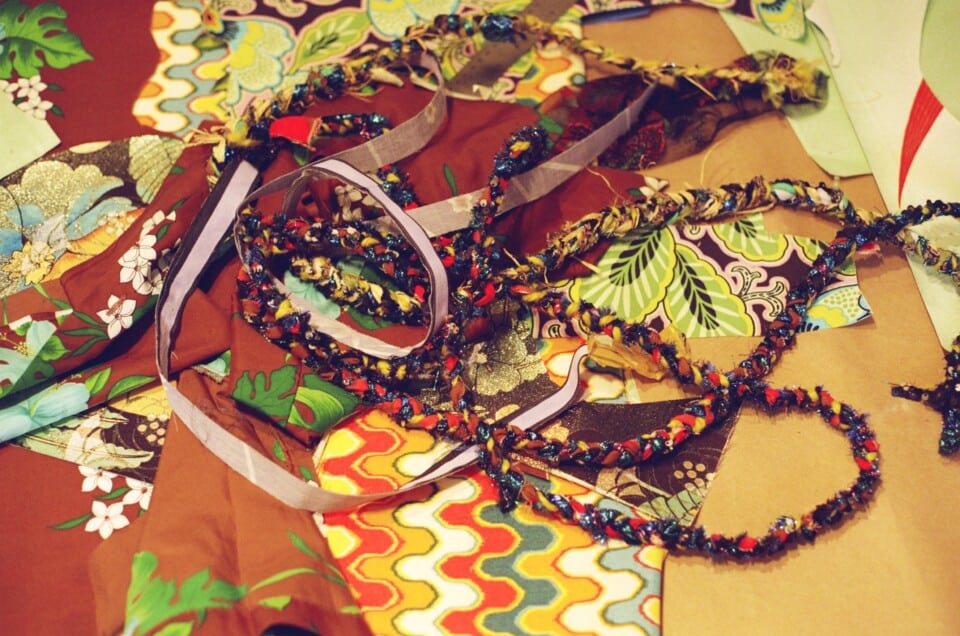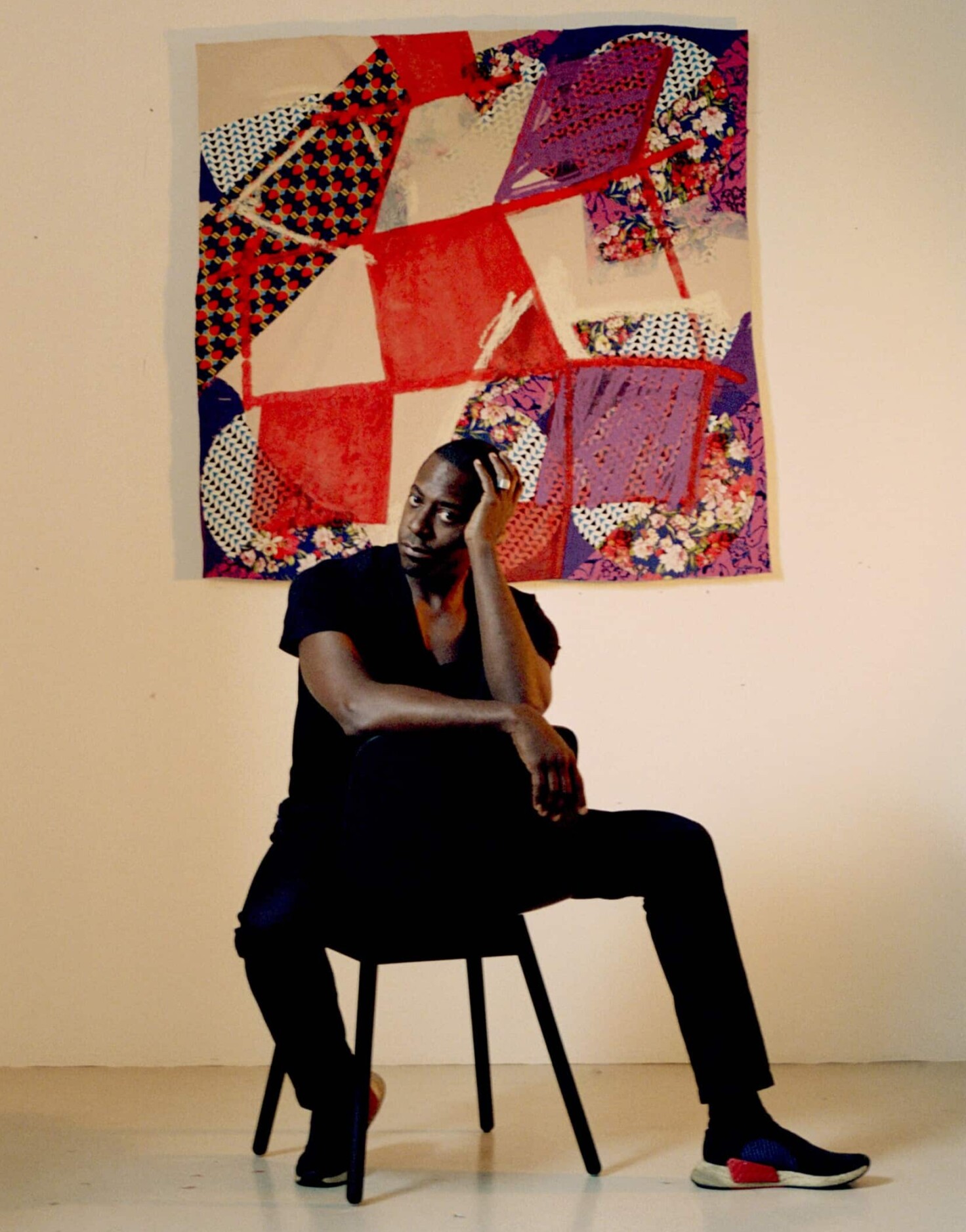With a career spanning more than 20 years, Sanford Biggers is best known for his mandala series exploring the geometric symbol’s impact and his quilted works that blend traditional patterns with sculptural elements. Those pieces and his more recent site-specific installations of whimsical, sequined cloud sculptures evoke feelings of childlike wonder. Biggers admits he’s always been a silly guy, and becoming a parent has only amplified this quality. He’s finding he wants to play as much as possible in his artistic life. As I remark on the amount of sparkling and shining objects strewn about the work tables, he discloses, “When I was in grad school, they said, ‘Never use glitter,’ so the first thing I did was go, ‘I’m getting some glitter right now.’”
On this visit to his studio, nestled on a quiet street in the Bronx, I learn more about the ways Biggers keeps play at the forefront of his practice. It’s his largest studio to date, and with a staff of eight, sometimes nine, people, he’s able to experiment with new formats and mediums of expression, including music. Within the industrial building housing his larger studio exists a white-walled room adorned by projects in various stages of completion and piles of material waiting to find homes in his art. He calls this space his brain. Further inside is a homey office he calls his heart, which contains keyboards, an audio mixing station, and speakers. This expanded multidisciplinary practice already bears new accolades for the artist; last year he won a Grammy for his contributions to Meshell Ndegeocello’s 2023 album The Omnichord Real Book.
Biggers describes drifting between music and visual art as part of his artistic rhythm, because it enables him to keep creating even when one medium isn’t necessarily ready to be worked on: “If I’m working on one of the quilt pieces and I get stuck—which happens all the time—instead of just hammering on and going in until I just destroy the piece, I sometimes have to distract myself with something else that is also generative and creative.” His work can also be painstakingly slow. As an example, he details the five years of research and development he spent settling on a design for the massive sequins that adorn his recent installation at Desert X 2025. Regardless, his overall vision is crystal clear: “I want the work to have strong formal compositional qualities, but at the same time, I want it to feel fast. I want it to feel spontaneous, and I want to not get stuck on merely the strokes and the minutiae, but more the overall tone and feel.”
